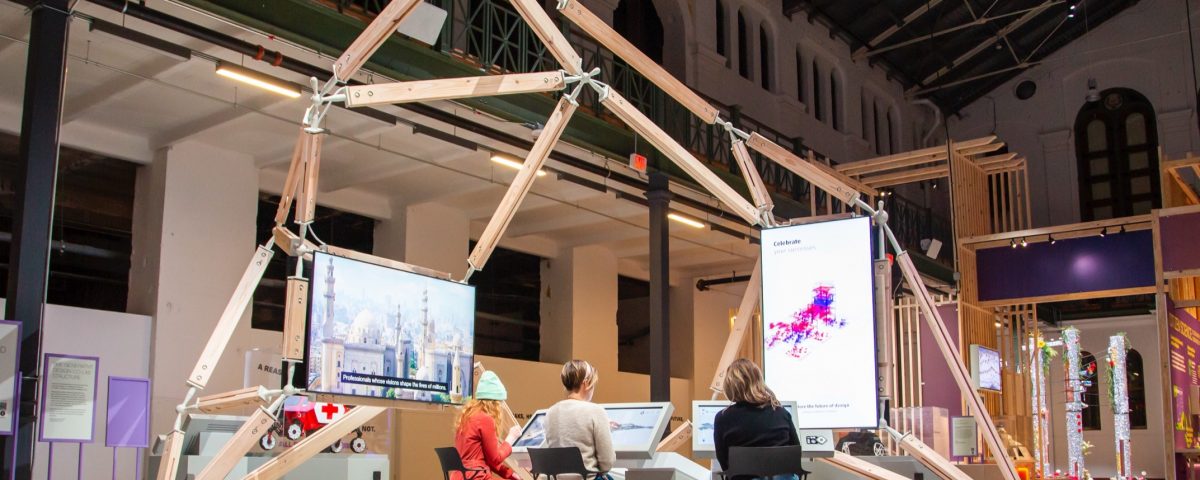
NDR unveiled as essential when complying with the Executive Order
November 18, 2021
Simplify Network Security with Cisco Secure Firewall-as-a-service (FWaaS) on AWS
November 29, 2021New Autodesk & Smithsonian Arts + Industries Building exhibit showcases the future of human/machine collaboration


America’s first National Museum, the Smithsonian Arts + Industries Building (AIB) has been dormant for nearly two decades. A few years ago, Autodesk learned the space would reopen for a temporary exhibition to celebrate the Smithsonian’s 175th Anniversary.
Now, that time has come! Through next July, the museum will be reborn as a national space to explore ideas and questions about the future. And as a company that shares AIB’s optimistic outlook and is hugely invested in empowering people to design and make a better world, we were eager to collaborate.

The Smithsonian’s Arts + Industries Building. By Ron Blunt. Courtesy Smithsonian.
Opening this weekend, on November 20, FUTURES is a building-wide exhibition, fusing awe-inspiring art, technology, design, and history. The Smithsonian is inviting visitors to dream big and imagine not just one, but many possible futures on the horizon.
As part of FUTURES, we teamed up with the Smithsonian AIB to create the Co-Lab, featuring a novel generatively designed, and sustainable timber structure, incredible stories showcasing the power of Human/AI collaboration, and an interactive multiplayer generative design experience, “Future Communities.”
After years of planning, designing, and collaborating with an amazing team of researchers, designers, architects, and curators, I’m thrilled for the public to get to experience what we created.

Within the Co-Lab, guests can play Future Communities, collaborating both with each other and AI to build a sustainable community block.
In the spirit of the AIB’s history of incubation and experimentation, we are inviting visitors to join in the experience and come together to shape future technology and design collaboration. The Future Communities exhibit brings visitors together to build a sustainable community block using analytics and goal-driven design with Autodesk generative design technology.
Learn more about Future Communities, an interactive multiplayer generative design experience.
Guests will collaborate both with each other and AI, making decisions and building a community block based on what they deem most important. Each participant takes a different role, choosing to be a “developer,” “ecologist,” or “mayor.” The roles have specific goals and input factors which include social, ecological, and economic considerations, ranging from the availability of green space and housing to the reach of public services and employment opportunities.
For example, the “ecologist” is committed to a greener city and cleaner air. The “developer” creates spaces for people to live and work. And the “mayor” wants to provide services fairly to all residents.
Each role has its own unique building tiles and goals and each team will have a limited number of building tiles to place. Participants can also enhance and improve their teammates’ designs by building on top of their existing tiles. The team should be thoughtful about what they build because tiles and space on the block are limited and those resources are shared.

When a visitor plays the “ecologist” role, AI might recommend a park or city farm to help alleviate urban density.
The community block will be displayed as it evolves in real-time. Metrics on the top right of the screen show how a design is performing. These will allow players to make informed design decisions by showing the impact of their actions. The four metrics are daylight, access to services, carbon footprint, and urban density.
The experience seeks to foster dialogue between visitors, engage them in collaboration, and challenge them to harness insights that AI can provide in order to build a thriving future for all stakeholders.
What excites me the most is the potential for AI and new collaborative tools like Future Communities to bring people together while removing individual biases to find better solutions that serve the greater goals of all stakeholders involved.

Players have the help of AI to design a community block of the future. It considers and assesses thousands of outcomes to balance the metrics in real-time to help teams improve the design step by step.
I worked closely with Brad MacDonald, Director of Creative Media at Smithsonian AIB, on Future Communities. One thing that struck us both while collaborating on this project, was the power of people and AI working together to solve complex problems.
Brad recently shared, “there’s never been an interactive exhibit like this. For the first time, we’ll see guests of all ages and backgrounds collaborate both with each other and AI to help design a sustainable city block. And what’s particularly fascinating about this, is that the development of technology and tools starts with people. Diverse voices and values –like the visitors who will come to AIB—are vital to creating an equitable and sustainable future. And importantly, the way we build and train the AI affects its use and the outcomes it recommends. We cannot wait to see what people come up with.”

Real-time metrics on the top right of the screen show how a design is performing. These will allow players to make informed design decisions by showing the impact of their actions.
I’m looking forward to what we can learn about new collaborative design tools and processes in the spirit of creating more equity and sustainability with better future outcomes. I hope you have the opportunity to experience new ways of Human/AI design collaboration by putting on the hat of a developer, ecologist, or mayor, and design the type of neighborhood you’d like to see in the future!
For more on FUTURES, visit here. The exhibit debuts on November 20 and will be free and open through July 2022.
Special thanks to Hyundai Motor Group, Kartell, NVIDIA, Starck, and Z by HP for their support of the Co-Lab exhibit.
Learn more about our collaboration with Smithsonian Arts + Industries Building

